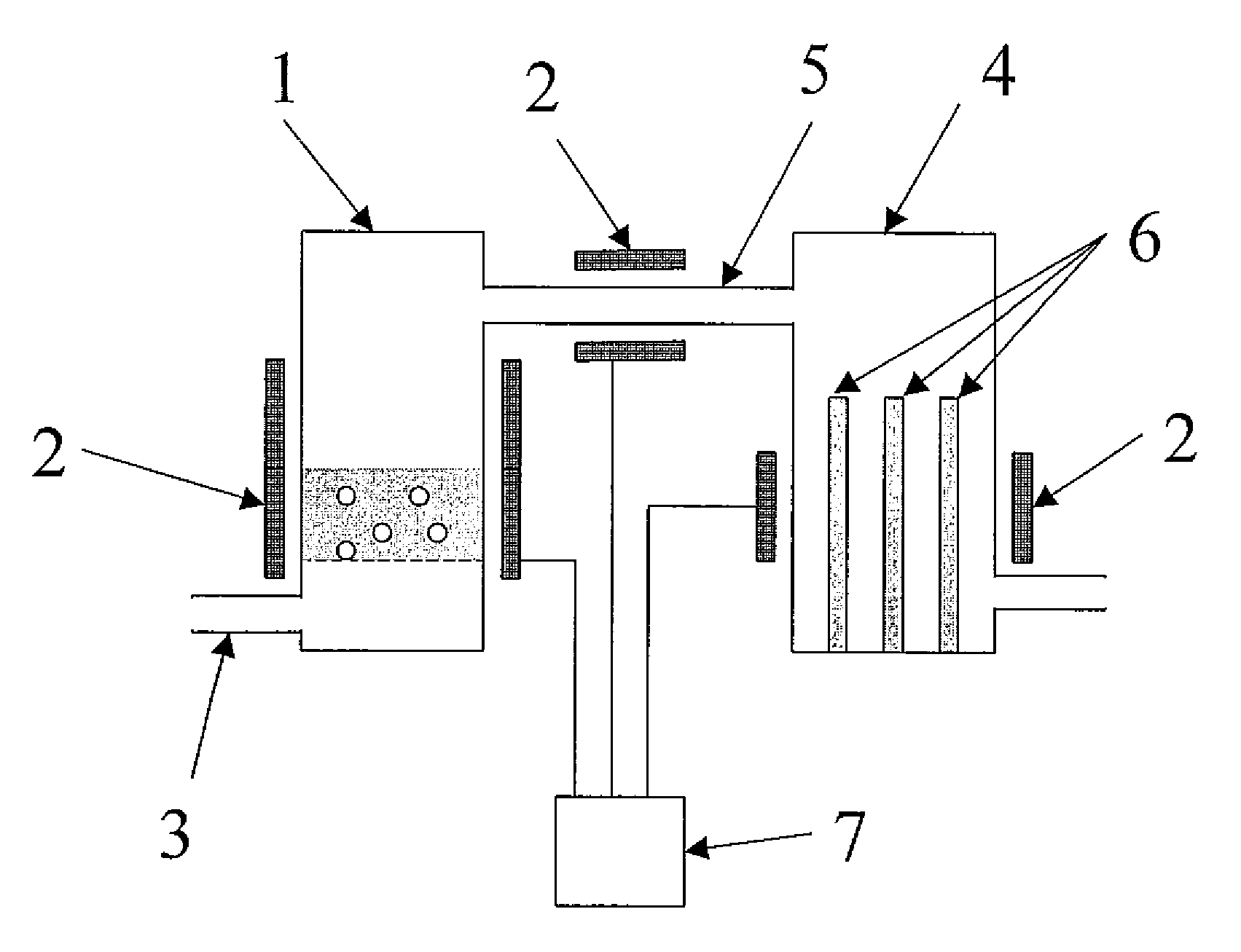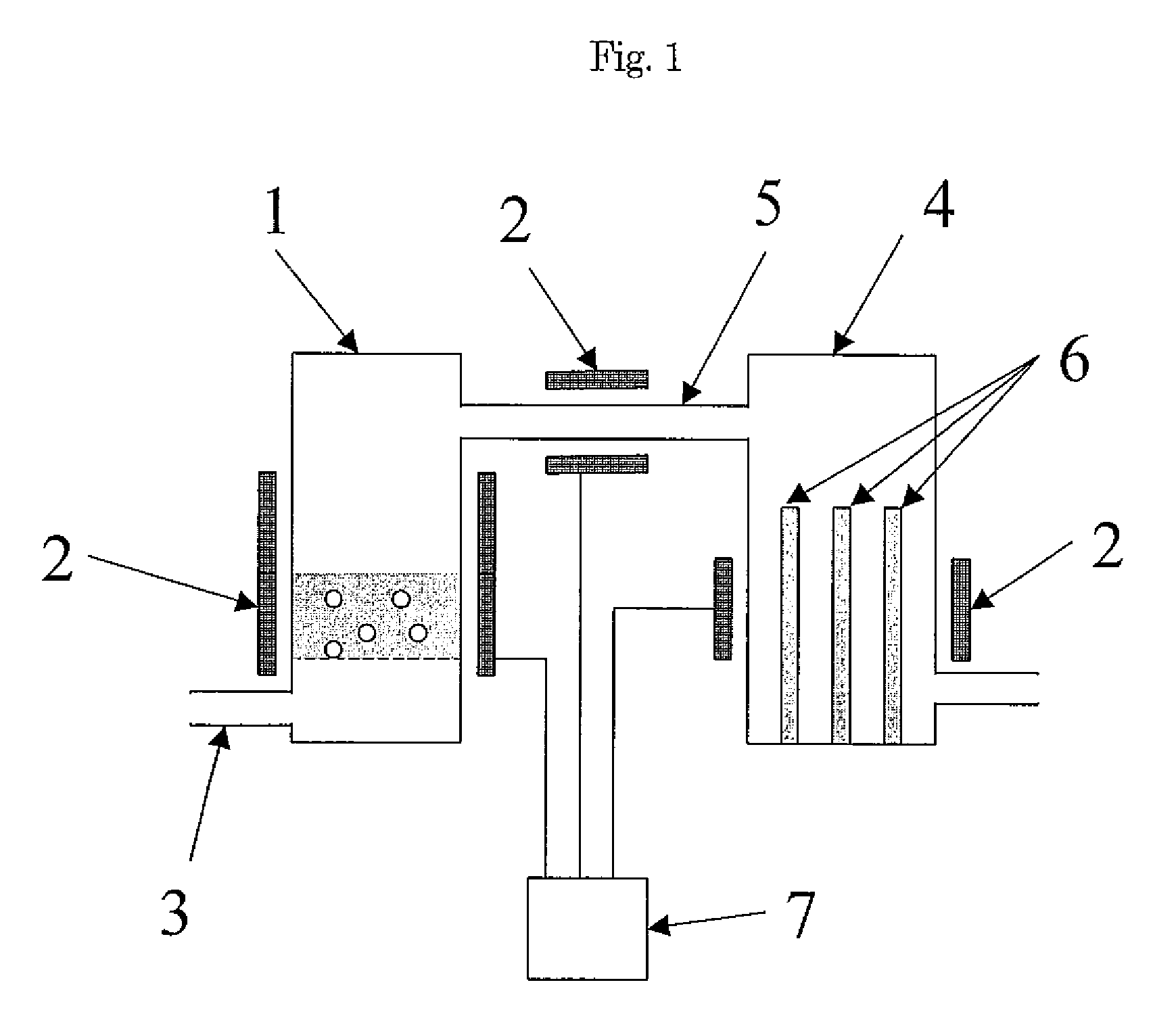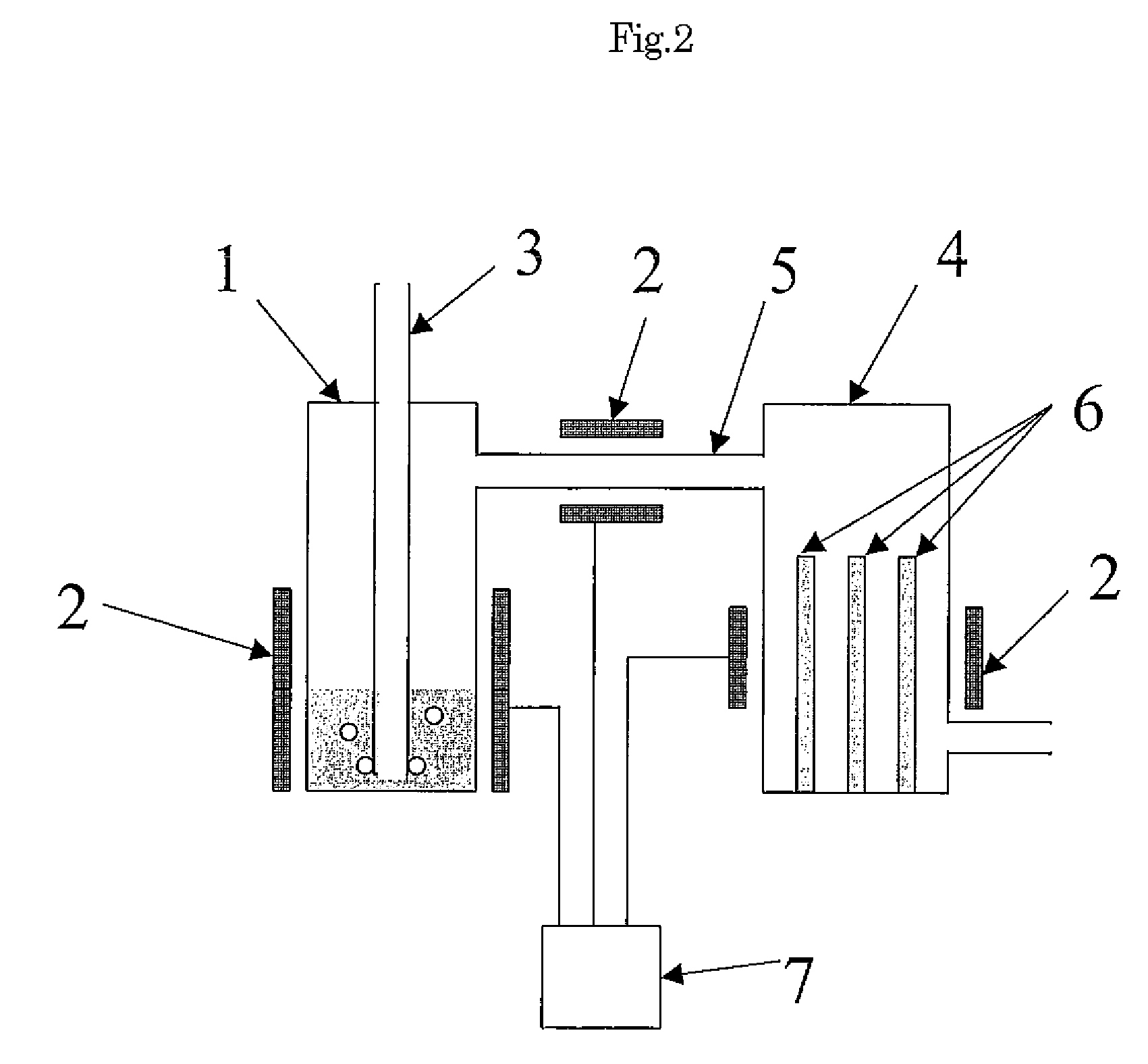Method for producing polycrystalline silicon
a polycrystalline silicon and polycrystalline technology, applied in the direction of silicon compounds, sustainable manufacturing/processing, final product manufacturing, etc., can solve the problems of limited method electric power consumption rate and difficult further reduction of cost, and achieve high purity polycrystalline silicon and efficiently reduce chlorosilane
- Summary
- Abstract
- Description
- Claims
- Application Information
AI Technical Summary
Benefits of technology
Problems solved by technology
Method used
Image
Examples
example 1
[0102]The apparatus shown in FIG. 7 was used.
[0103]An alumina protecting tube 14 (manufactured by NIKKATO CORPORATION, SSA-S, No. 8, inner diameter: 13 mm) including 10 g of aluminum (purity: 99.999% by weight, Fe: 0.73 ppm, Cu: 1.9 ppm, Ga: 0.57 ppm, Ti: 0.03 ppm, Ni: 0.02 ppm, Na: 0.02 ppm, Mg: 0.45 ppm, Zn: less than 0.05 ppm, B: 0.05 ppm, P: 0.27 ppm) was held in an alumina container 13, and was held in a vertical tubular furnace 11. Silicon tetrachloride gas (purity: 99.9999% by weight (6N), Fe: 5.2 ppb, Al: 0.8 ppb, Cu: 0.9 ppb, Mg: 0.8 ppb, Na: 2.4 ppb, Ca: 5.5 ppb, P: less than 1 ppm, B: less than 1 ppm, manufactured by Tri Chemical Laboratories Inc.) was introduced into molten aluminum for 4 hours at 1573K (1.68 times of the melting point of aluminum) and reacted. In order to carry out gas bubbling, the distance between a top end of a gas tube 12 (manufactured by NIKKATO CORPORATION, SSA-S, an outer diameter: 6 mm, inner diameter: 4 mm) and a bottom part of the alumina prot...
example 2
[0107]The aluminum protecting tube 14 having 11 g of aluminum was held in the alumina container 13, and held in the vertical tubular reactor 1. Then, silicon tetrachloride gas was introduced for 126 minutes into molten aluminum at 1573K and reacted at an atmospheric pressure.
[0108]Argon gas of 50 SCCM (flow rate: 50 mL / min., 0° C., 101.3 kPa) as a carrier gas was introduced into a container made of stainless steel in which silicon tetrachloride gas was filled. Vaporized gas was introduced into the reactor with the carrier gas. The feed rate of silicon tetrachloride per one minute was 0.44 g. The number of moles of the silicon tetrachloride was 0.69% with respect to the number of moles of aluminum. A flow rate of a gas component contacted with aluminum to have an equal temperature at the deposition zone was 3.58 m / min. The container made of stainless steel in which silicon tetrachloride was filled was held in the thermostatic vessel at 45° C. A vapor pressure of silicon tetrachloride...
example 3
[0109]Silicon tetrachloride gas was introduced into molten aluminum for 126 minutes at 1473K (1.58 times of the melting point of aluminum), and reacted. A gas flow rate at the deposition zone was 3.36 m / min. Except for this procedure the same procedures as Example 2 was repeated. The weight of silicon deposited on the wall of the alumina protecting tube was 1.2
PUM
| Property | Measurement | Unit |
|---|---|---|
| pressure | aaaaa | aaaaa |
| average particle diameter | aaaaa | aaaaa |
| thickness | aaaaa | aaaaa |
Abstract
Description
Claims
Application Information
 Login to View More
Login to View More - R&D
- Intellectual Property
- Life Sciences
- Materials
- Tech Scout
- Unparalleled Data Quality
- Higher Quality Content
- 60% Fewer Hallucinations
Browse by: Latest US Patents, China's latest patents, Technical Efficacy Thesaurus, Application Domain, Technology Topic, Popular Technical Reports.
© 2025 PatSnap. All rights reserved.Legal|Privacy policy|Modern Slavery Act Transparency Statement|Sitemap|About US| Contact US: help@patsnap.com



